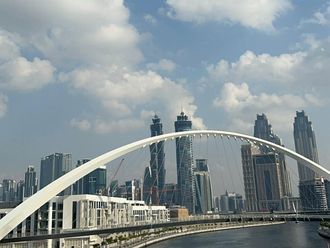
“Oh you’re from Manipur, do you know kung fu?” he asked me, as his friends sniggered.
“Like this,” he went on to add, as he chopped the air and attempted his best Bruce Lee moves. Laughter broke out at the shoe shop in central Bengaluru. Seething, I wanted to punch him in the face.
Or land a nice one on his groin as he did a mock split. But my brother intervened, distracting me with a question and quickly ushered me out of the shop. Having spent all his high-school years in south India, he perhaps knew best not to react.
It was my first experience though, being jeered at like that in my own country. And although it was 20 years ago, I still remember clearly the feeling of isolation and the sudden realisation of how different I was from them.
And oh, the anger. I have learned to suppress those feelings over the years. Resentment turned to acceptance. So much so, that even when the taunts were more menacing — “Dog eaters”, “Ping Pong,” “Chinki”, “We should cut you away from India” and the classic “How far is Manipur from India?” — I would sigh them away.
My mother’s stern words would always echo in my head: “You’re there to study and become someone. I don’t want to hear anything else.”
However, the new generation, it seems, does not see it that way. It is fighting back. People are now standing up for themselves, asserting their place in their own country. And it is leading to tragic ends, like the recent death of the teenager Nido Tania in New Delhi, a city with the largest concentration of people from India’s northeastern region.
According to the North East Support Centre and Helpline (NESC&H), more than 414,850 people from northeast India moved to the cities — Delhi, Mumbai, Bengaluru, Chennai — between 2005 and 2010. That number has more than doubled in the last few years.
Manipur, where I was born, is one of seven states from that region, a region barely connected to the rest of India. We are not only geographically isolated from the mainland, we are culturally and ethnically closer to India’s neighbouring countries China, Myanmar and Bhutan.
Because of this, insurgency is rife in many states, with many armed groups still fighting for secession from India since the country’s formation in 1947.
Some states ban Bollywood films, which they see as a manifestation of Indian culture, while in some places, even the singing of the Indian national anthem in schools is not allowed.
Instead, more western cultures flourish — thanks to a huge Christian population and teenagers now grow up on a heavy diet of South Korean films imported across the border from Myanmar, which has also influenced a thriving sub-culture, from fashion and music to even language.
The effects of India’s economic boom have failed to spill over to the region. That, coupled with its myriad political problems, have forced many people to move to the mainland to seek a better life and opportunities.
They take with them those long-held feelings of isolation and neglect, which in-turn manifest into deeper wariness and heightened sensitivities of their place in the larger society. “Increasing contact will mean increasing confrontations,” A. Bimol Akoijam, an associate professor at the School of Social Sciences in Jawaharlal Nehru University (JNU) in Delhi told me, following the death of Richard Loitam, a student from Manipur in Bengaluru in 2012, after being beaten allegedly for being “different”.
His death triggered a wave of anti-hate crime protests in the country. “Indian society is inherently racist, and issues such as cast and colour are ingrained in its psyche,” Akoijam added.
Last year, two Swedish economists set out to examine whether economic freedom made people any more or less racist. They picked a study by World Values Survey, which asked respondents in more than 80 different countries to identify the kinds of people they would not want as neighbours. The more frequently people said they did not want neighbours from other races, the less racially tolerant you could call that society, they thought.
The results, published in the Washington Post, put India as one of the least tolerant, with more than 40 per cent of respondents saying they would not want a neighbour from a different race.
Surveys are never accurate representations, but with this rising tide of protests and increasing number of hate crimes against people from the north east, it is difficult not to give it some weight.
India has always projected itself as a truly multicultural and tolerant society. The reality on the ground, I can attest, is very different. Since 2012, there have been three recorded deaths which have been specifically attributed to attacks against people from the country’s northeastern region.
And that is just one group of people. Caste system still exists widely, divisions between the rich and the poor, the light and the dark-skinned is still rife. And religious tensions have led to thousands of deaths in the past.
The Swedish researchers I mentioned concluded that economic freedom had no correlation with racial tolerance.
Where does that leave a rising economy like India with its complicated social structures and multiple ethnicities? It is time for some soul-searching.












